LG C4 is a television that, in its price range, will likely have no competition for many users. Thanks to its extensive capabilities, it will appeal to those looking for a television not only for films and series but also for gaming. The advanced WebOS system and a remote control that functions like a mouse will certainly be a significant convenience in everyday use, making it likely that we will stick with this brand for much longer. The OLED panel implemented by the manufacturer, resulting from over 10 years of history, shows that this brand has not yet said its last word. The brightness results in HDR materials are very solid and can deliver an incredibly dynamic and deep image. It is worth mentioning the excellently implemented dynamic tone mapping feature, which makes HDR10 content look almost as good as Dolby Vision. And when it comes to fidelity to artistic vision, one cannot overlook how calibratable LG televisions are, allowing considerable freedom for calibrators and classic calibration for home users, as well as 3D LUT for professionals. However, if we are looking for a gaming television, then the LG C4, like most of the manufacturer’s OLED televisions, will be an ideal choice. With the implementation of HDMI 2.1 ports and the full utilisation of their potential, we can enjoy incredibly smooth gameplay with all the benefits, such as VRR, ALLM, FreeSync, and G-Sync. Of course, the panel, with a maximum refresh rate of 144 Hz and an advanced motion smoother, will also provide a very smooth and sharp image during the broadcast of various sporting events. It is hard not to give a high rating to LG OLED C4, as a television in a similar price range with such advanced features is difficult to find among the competition.
- Matching (Score)
- Our verdict
- TV appearance
- Where to buy
- Contrast and black detail
- HDR effect quality
- Factory color reproduction
- Color reproduction after calibration
- Smoothness of tonal transitions
- Image scaling and smoothness of tonal transitions
- Blur and motion smoothness
- Console compatibility and gaming features
- Input lag
- Compatibility with PC
- Viewing angles
- TV efficiency during daytime
- Details about the matrix
- TV features
- Apps
- Playing files from USB
- Sound
LG OLED C4 vs LG OLED B5
Direct compare
C45 / C41

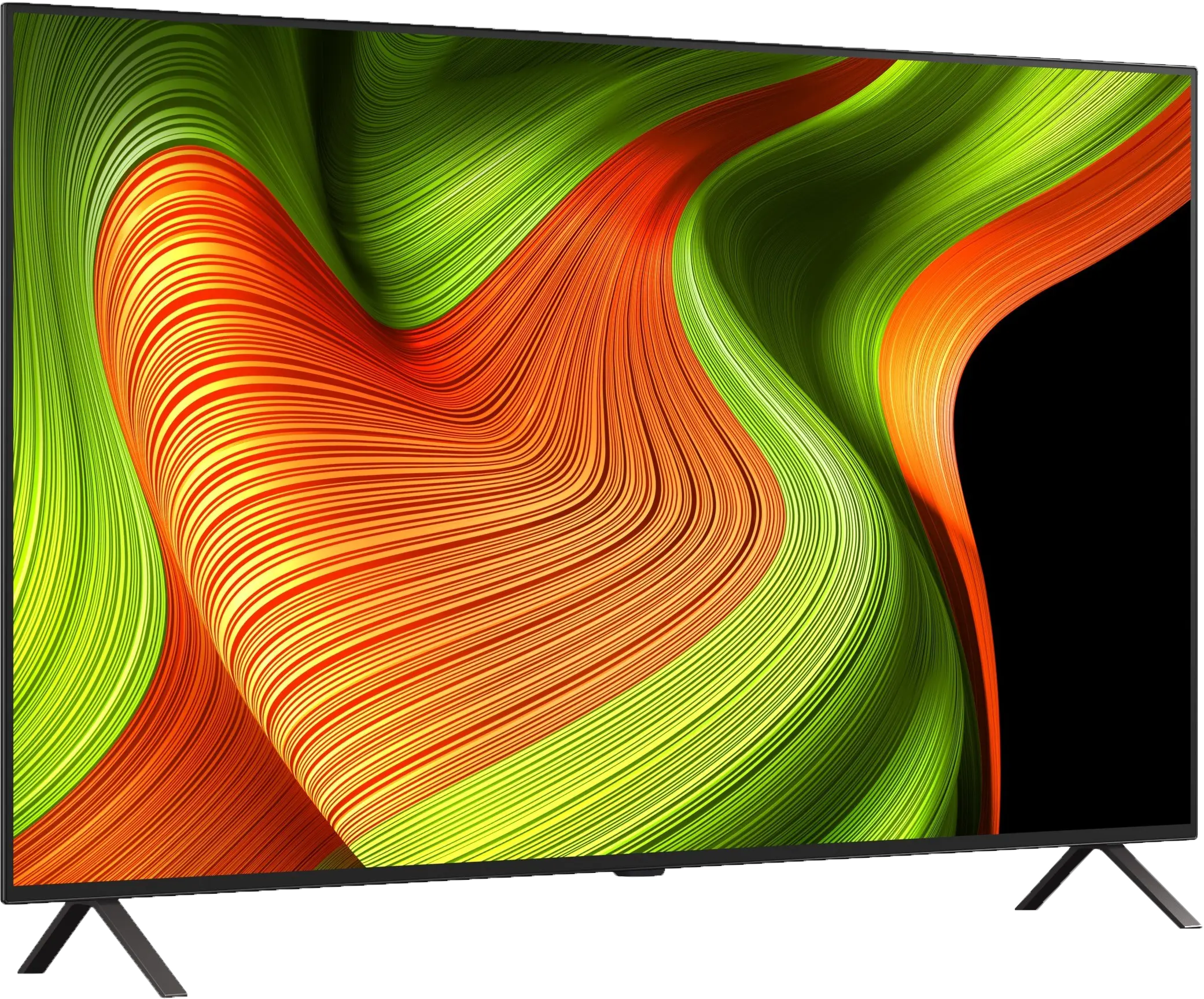
Panel type: WRGB OLED
Resolution: 3840x2160
System: WebOS
Model year: 2024
Complete the survey to find out the result

Panel type: WRGB OLED
Resolution: 3840x2160
System: WebOS
Model year: 2025
Complete the survey to find out the result

Overall rating
8.2
7.8
Movies and series in UHD quality
8.2
7.9
Classic TV, YouTube
8.8
8.6
Sports broadcasts (TV and apps)
8.6
8.5
Gaming on console
9.3
9.2
TV as a computer monitor
8.6
7.6
Watching in bright light
5.7
4.9
Utility functions
9.0
8.2
Apps
8.7
8.7
Sound quality
7.5
7.0
Complete the survey to find out what fits your preferences
Advantages
High efficiency in HDR materials
Very good colour reproduction after calibration
Faithfulness to the image with directorial vision
Excellent collaboration with consoles and PCs - low input lag, a wealth of conveniences
Advanced motion smoothing system
Perfect black and contrast
Pleasant image in HDR format
Excellent colour reproduction capabilities
120Hz OLED panel - great motion fluidity
4 HDMI 2.1 ports and full support for gamers (VRR, ALLM, Dolby Vision Gaming, HGiG)
Very low input lag
Correct content scaling and good digital processing
User-friendly webOS system with a Magic remote
Built-in USB recording function from built-in DVB-T/T2 tuners
Disadvantages
Sometimes visible tonal transitions
Average brightness and poor performance in bright rooms
No support for DTS formats
Different remote versions in derivative models – difficult to predict which version we will receive
Our verdict
LG B5 is really a good OLED television, which shows that you don't have to spend a fortune for very good quality. It offers deep blacks typical of organic panels, very good colour reproduction – especially after calibration – and enjoyable HDR movie watching experiences. All of this means that evening screenings can provide cinema-like emotions even without resorting to much more expensive screens. The smoothness of the picture and the set of features for gamers also deserve recognition. A 120 Hz panel, low input lag, full support for HDMI 2.1, variable refresh rates, and Dolby Vision Gaming mode make the B5 a very versatile screen – both for gaming and watching sports. The friendly webOS system with a Magic remote adds to the package, providing convenient access to content and simplifying operation. However, not everything is perfect. Compared to the B4 model, a slight drop in brightness can be noticeable, especially in very bright rooms. For some users, the lack of DTS audio support may also be a problem, which could force some workarounds when connecting Blu-ray players. Despite this, LG B5 remains one of the most sensible choices for those who want to enter the world of true cinema – without overspending, but also without major compromises. It's a screen that doesn’t need to prove anything – it simply delights the eye with excellent picture quality and works as it should.
TV appearance




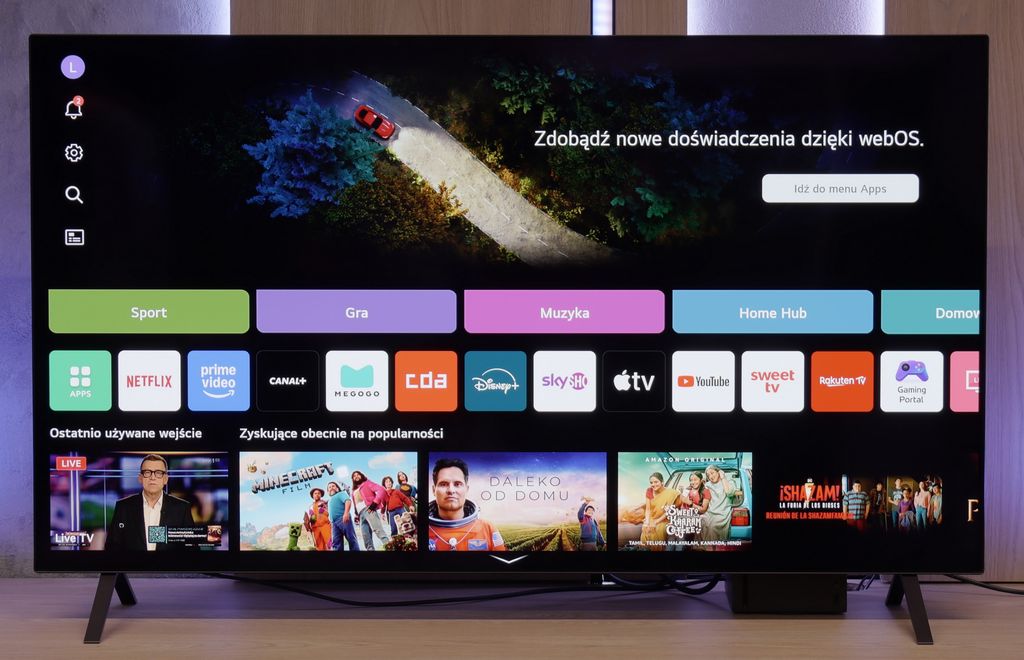
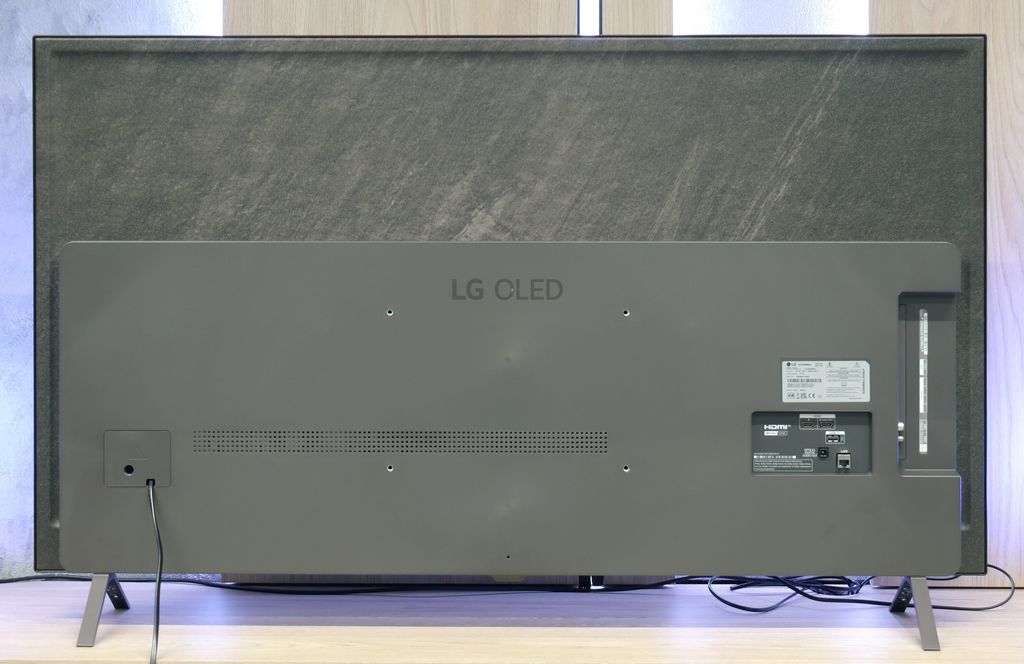

Contrast and black detail
10/10
10/10
Contrast:

Result
∞:1

Result
∞:1

Result
∞:1

Result
∞:1

Result
∞:1

Result
∞:1

Result
∞:1

Result
∞:1

Result
∞:1

Result
∞:1
Halo effect and black detail visibility:


LG OLED C4, as the name suggests, uses an organic panel of its own production. This series definitely ranks among the most recognisable on the market. Over 10 years of experience in the construction of self-emitting panels has allowed for the refinement of each subsequent design, with the models from the 2024 vintage being the epitome of this. Of course, the use of this type of screen enables the achievement of impeccable contrast and blacks, allowing for immersion in the world created by the director. This is made possible by the OLED panel, characterised by the absence of conventional backlighting, with current passing through organic pixels instead. This allows for super-accurate control of the image, thereby eliminating issues such as the dimming of delicate fine details or the halo/blooming effect. Looking at both of our test scenes, we can observe two things: perfect separation of lights and a whole plethora of details in the film "Sicario 2".
If you are looking for changes compared to last year's LG B4, we will immediately dispel any doubts – you won't find any in this category at all. And that's good. Because how to improve something that is already bordering on perfection? The LG B5, as a television with an organic WOLED panel, offers black as tar scenes and a contrast that is hard to find even in the most expensive LCD screens. The display is as clear as a bell – no bleed-through, no streaks, no halo effects that can ruin the atmosphere in cinema scenes. Here, everything is in its place. Details separate from the black with surgical precision, nothing blends together, even in the most demanding sequences from films such as The Revenant or Oblivion. This is the type of television that can enchant you, especially when the room goes completely dark. When the lights go out, the LG B5 takes centre stage – and it does so spectacularly. In these conditions, OLED shines the brightest, and even top LCD models – despite advanced dimming and hundreds of zones – simply fall behind.
HDR effect quality
6.9/10
6.2/10
Luminance measurements in HDR:

Result
796 nit

Result
772 nit

Result
869 nit

Result
837 nit

Result
604 nit

Result
587 nit

Result
593 nit

Result
628 nit

Result
589 nit

Result
470 nit
Scene from the movie “Pan” (about 2800 nits)


Scene from the movie “Billy Lynn” (about 1100 nits)


Static HDR10


Dynamic: Dolby Vision
Dynamic: Dolby Vision


HDR luminance chart:
LG OLED B5
Luminancja HDR
Luminance of RGB colors
LG OLED C4
Luminancja HDR
Luminance of RGB colors
The results of HDR materials are definitely among the better ones. Practically every film significantly exceeds the 700 nits barrier, allowing for a very realistic image. Of course, none of them surpasses the magical thousand, yet the combination of such results and unlimited contrast and black effectively boosts the outcome optically. The last of the scenes, featuring a full-screen burst of sunlight, is actually less bright than the others, although it still represents a commendable level. It is also worth mentioning the excellent coverage of the DCI-P3 colour palette, which will allow for achieving extremely vivid colours.
The LG B5 is a moderately bright OLED television. Regardless of the scene, it can generate around 500 nits of peak brightness. Interestingly, it achieves this even in full-screen shots saturated with white, where most OLEDs typically struggle. So is this screen suitable for HDR films? Indeed – and very much so, because such brightness allows you to truly feel the magic of HDR effects. However, it is worth noting that compared to last year's B4 model, the new B5 is darker – by about 100 nits. It may seem like a small amount, but at such average peak values, it makes quite a significant difference. Fortunately, the television compensates with another advantage – excellent coverage of the DCI-P3 and BT.2020 colour gamut. As a result, HDR films look really colourful, vibrant, and impress even in more demanding scenes.
Factory color reproduction
8.1/10
8.2/10


Factory Mode
After calibration


Factory Mode
After calibration
The best factory mode implemented in the tested television was "Filmmaker". It was this mode that we used during all tests. This mode proved to be quite good in terms of colour reproduction; however, other shortcomings effectively detracted from the enjoyment of viewing. Starting with the most basic aspect, the white balance, it was easy to notice that it was marked by a dominance of red, which overall changed the characteristics of the image. We could thus see a strong yellowing of the whites and a shift of all colours towards warmer shades. The gamma, which is a curve just as important, if not more so, was quite significantly lowered, resulting in a considerable drop in contrast, except at the beginning of the graph, where the television insidiously lost details. That’s all regarding SDR materials. Taking a closer look at films with a wide dynamic range, we can observe exactly the same phenomenon of yellowing of the white balance as in films with a standard colour palette. The EOTF curve, which replaces our gamma curve, is practically perfect and cannot be faulted.
We tested the B5 in Filmmaker mode and... we would love to see more TVs like this straight out of the box. Truly. The white balance is set very well – there's practically nothing to complain about. Well, if one were to nitpick, one might notice a slight deficiency in blue, which makes the overall image seem slightly yellowish. But that’s just our editorial quibbling. Most of you probably wouldn’t even notice it. We also have minimal reservations about brightness management in HDR format. The EOTF curve – which is responsible for how the TV distributes brightness in a scene – is slightly below ideal. In practice, it may happen that the darkest parts of the image are displayed too dark and simply… disappear. But these are details that only come out in measurements. Generally: we are impressed. However, we also know that LG TVs respond very well to professional calibration. You can achieve almost reference-quality picture from them, so – while it's already very good out of the box – we allowed ourselves to go a step further and refine everything to perfection.
Color reproduction after calibration
9.5/10
9.1/10



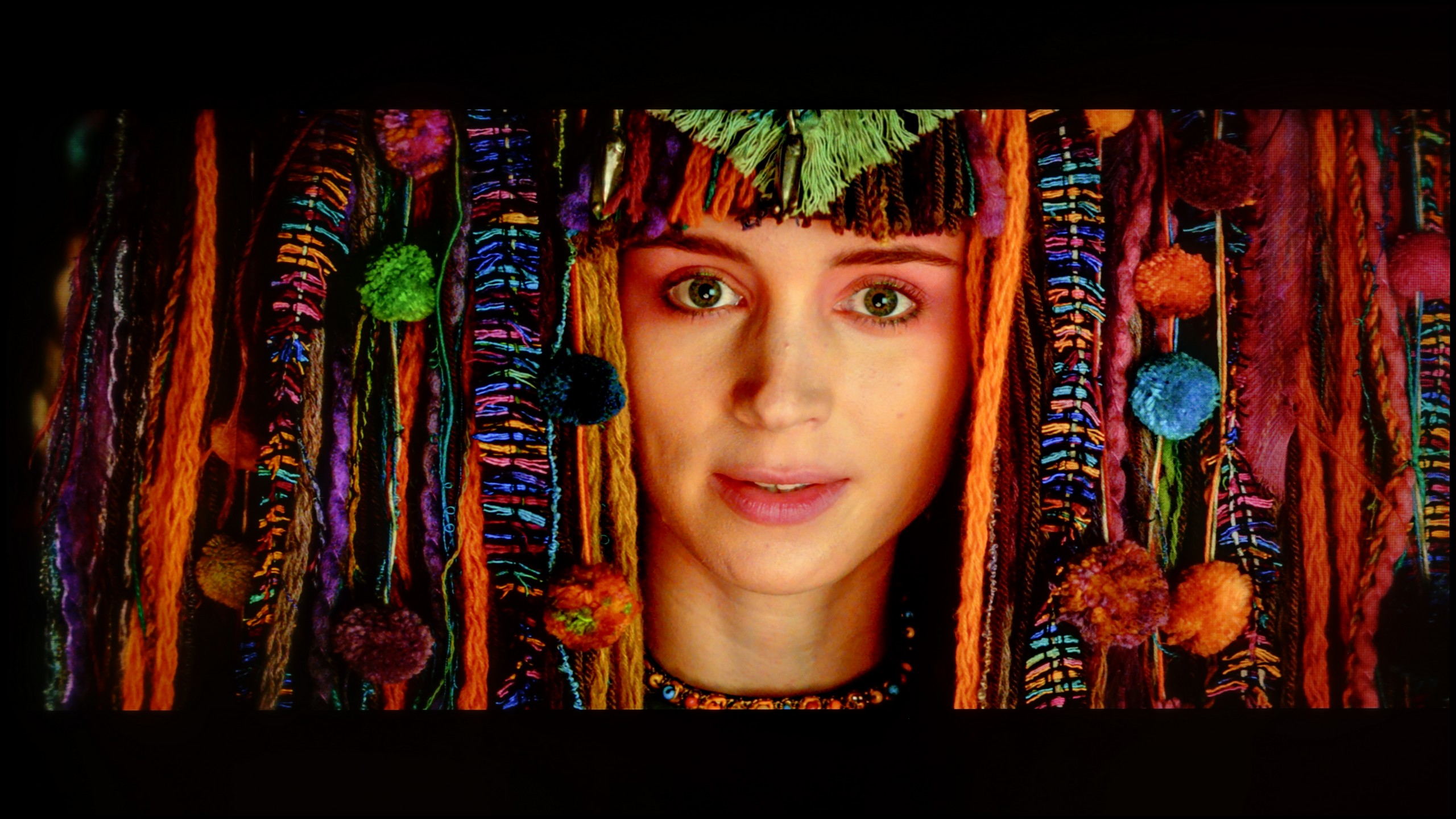
As we mentioned earlier, LG televisions are equipped with advanced tools for carrying out the calibration process. We therefore used them to model the image in the way that the director intended. And without modesty, we must admit that we achieved this phenomenally. Both SDR and HDR materials present a level that clearly indicates that this is how a film should look. It is worth looking at the colour errors on the "ColorChecker" palette here, where practically none of them exceeds "1", apart from two samples.
We must admit that we didn't have much work with the LG B5. It's one of those televisions that look good right from the start, but after calibration… they can really impress. The white balance was brought to almost perfect levels – to the point of errors that are invisible to the human eye, unless you are a professional colourist with a magnifying glass at the screen. We also managed to master the tendency of the television to slightly dim the darkest details, particularly in HDR scenes. After proper tuning, everything looks cohesive: black remains deep but does not consume information. Highlights maintain their natural sparkle, and colours align with the director's vision. This is truly one of those models that shows you don't have to spend a fortune to have an almost reference-quality picture. If you can opt for professional calibration – it’s definitely worth it in the case of the B5.
Smoothness of tonal transitions
7.1/10
7.2/10





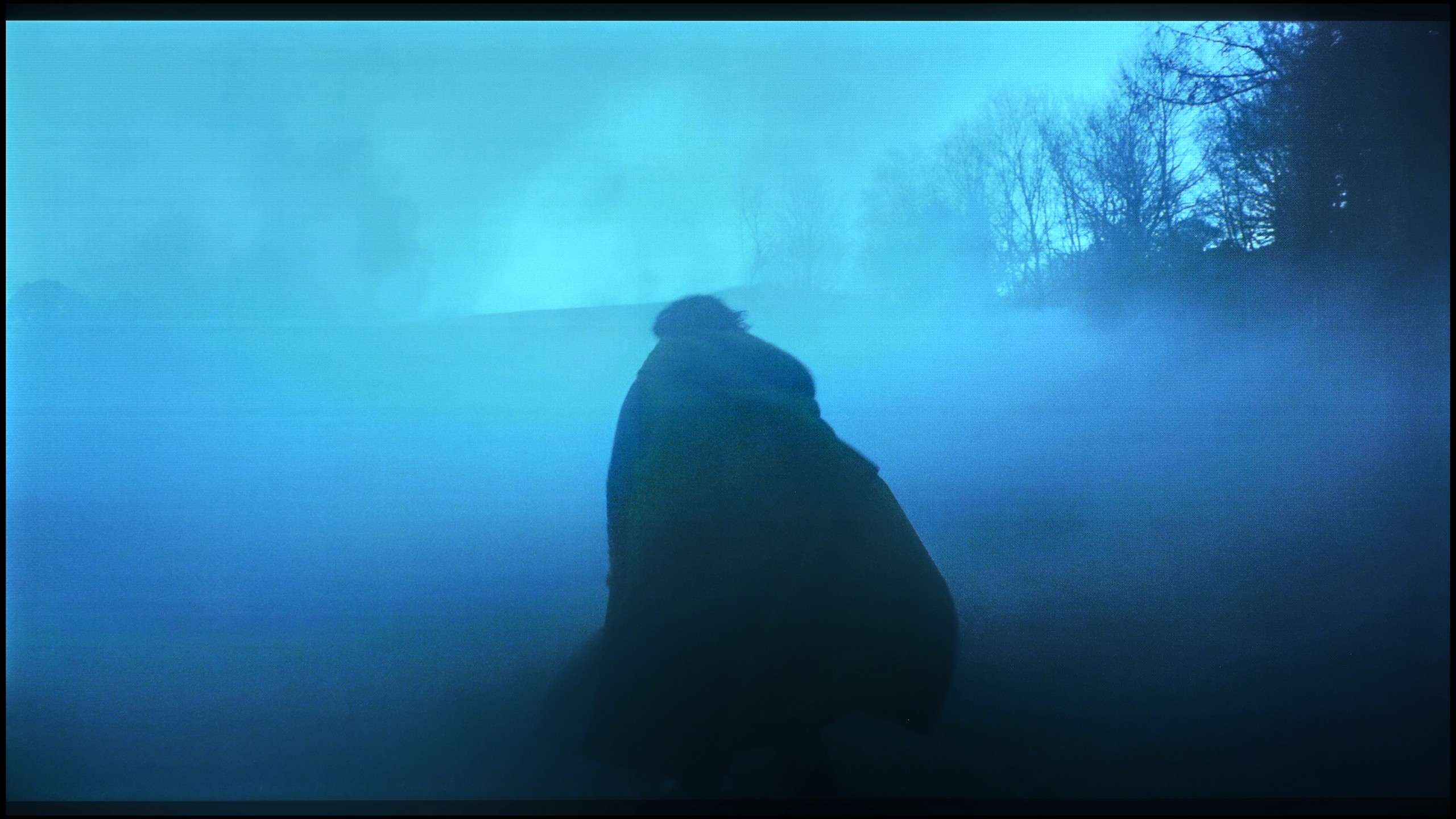

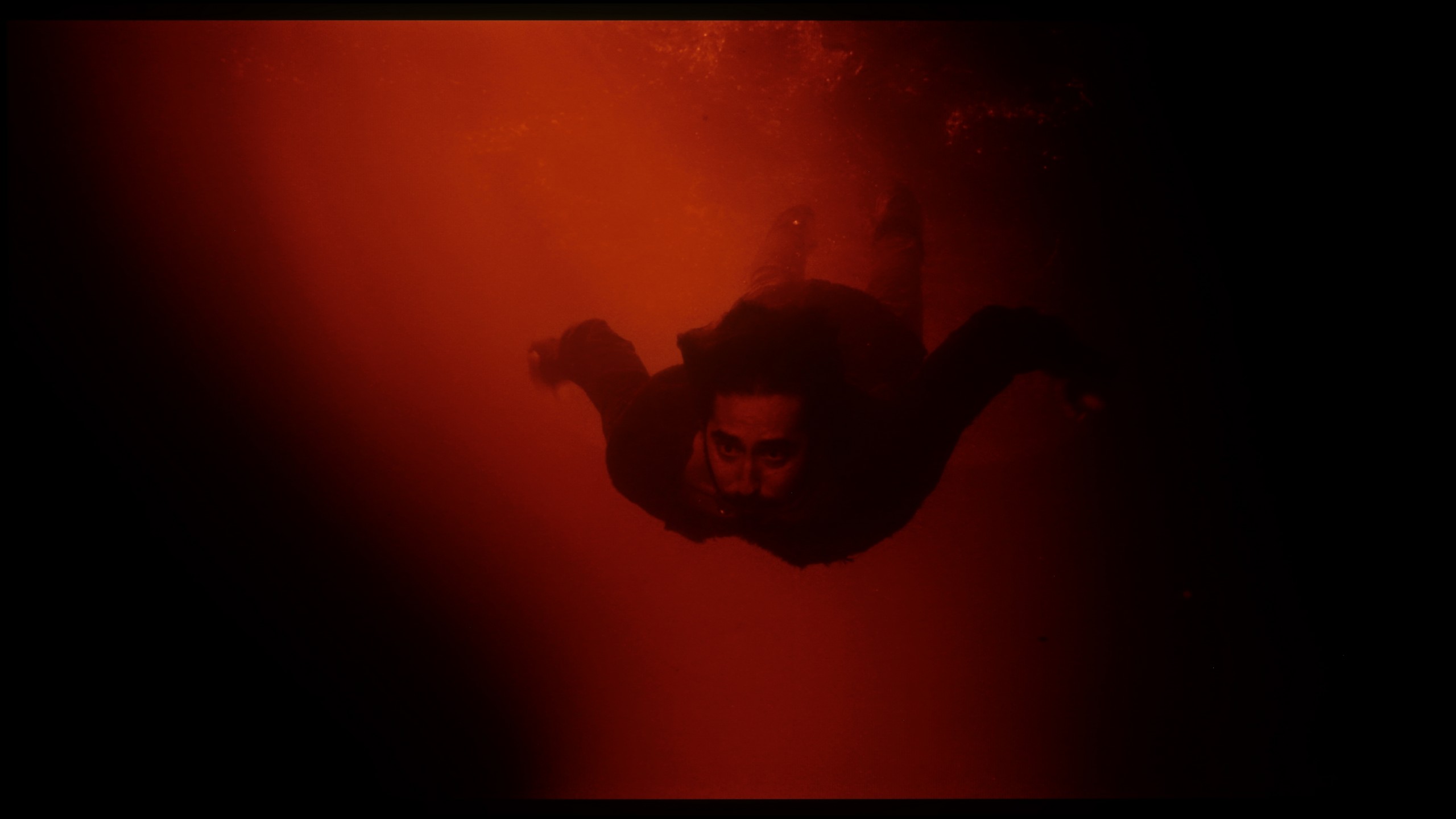




The fluidity of tonal transitions in LG televisions has always been a fairly sensitive issue, as the manufacturer, despite impeccable performance in other areas, has almost always struggled to get this right. The results of the assessment of the fluidity of tonal transitions in the tested television were quite good, and the problems are mainly visible in darker scenes, such as the last two scenes. Interestingly, this is a result that is definitely better than the highest model from the manufacturer, namely the LG G4.
The LG B5 handles colour gradation quite decently. In bright scenes, where we have smooth transitions between skin tones, the sky, or backgrounds, the television blends colours seamlessly and without any jarring effects. At first glance – it looks good, especially considering the price. However, it is enough to reach for more challenging material – those darker, more demanding scenes with a lot of subtle transitions – and the challenges begin. Minor artefacts, false contours, and slight thickening appear. It is still not a level that dazzles or distracts from the narrative, but the difference compared to more expensive WOLED models – and even more so QD-OLED screens – becomes noticeable.
Image scaling and smoothness of tonal transitions
8/10
7.5/10
Smooth transition function

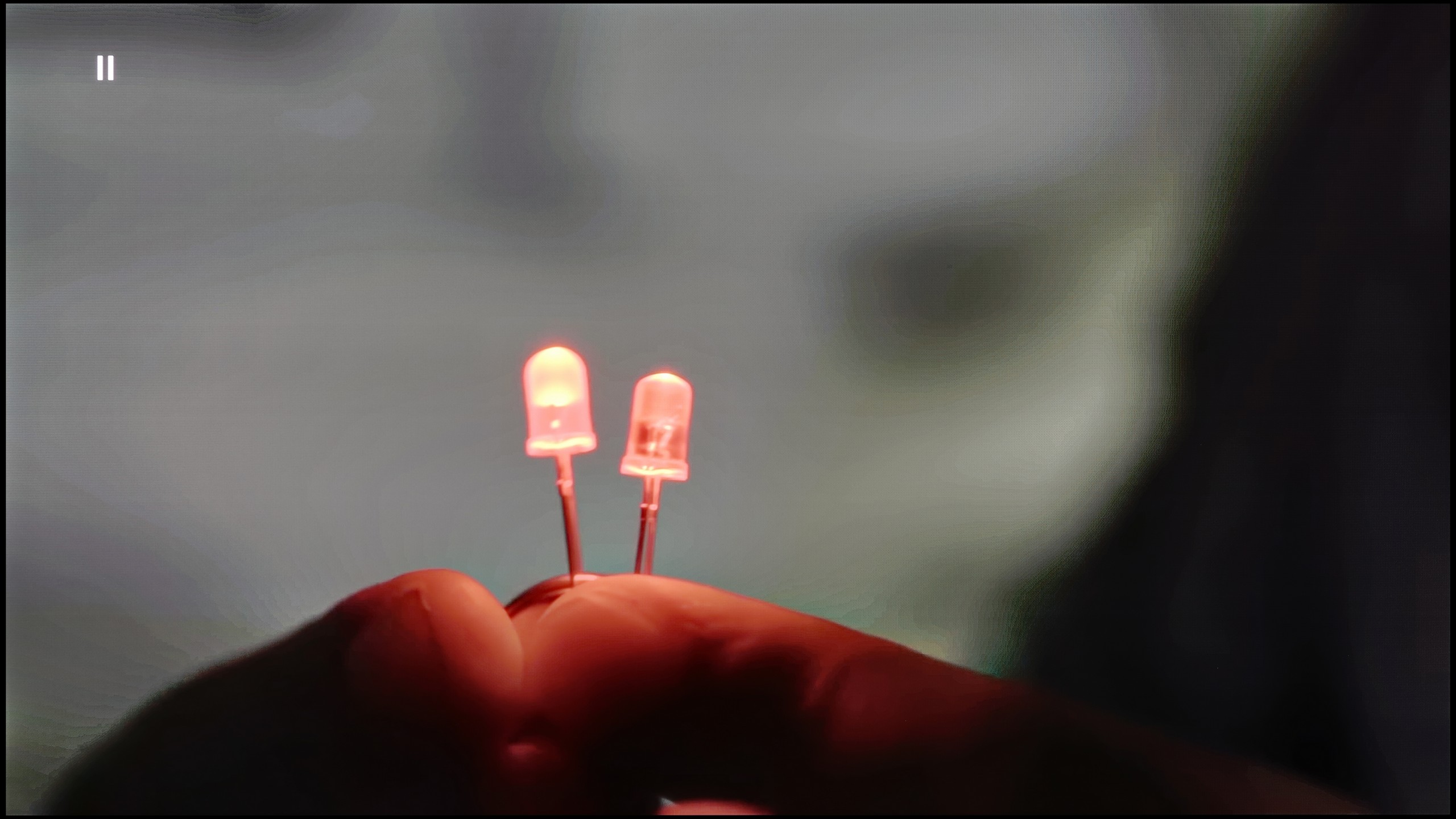
Image without overscan on the SD signal


Once again, we will take a look at the function responsible for smooth gradation, but we will also address the one that aims to improve the quality of lower-quality materials. The default smoothing of tonal transitions, as we have seen, was not the worst, but it can still be improved. The function has a slider, which allows us to adjust its strength. We recommend using the first one, as it yields very good results and does not blur important details.
Image scaling in LG C4 is quite good; however, it cannot be said to be without flaws. The image is slightly sharper by default, although not in a very noticeable way. Admittedly, there are jagged edges on the trees, but this is not a major issue compared to other manufacturers.
LG B5 really positively surprised us in terms of handling lower quality content. Thanks to the enhancement and smoothing features, materials in HD resolution or even SD gain a second life. Importantly – when this option is activated at the "low" or "medium" level, we do not feel that the image is artificially softened or smoothed out unnecessarily. Details remain intact, film grain does not disappear, and the edges of objects do not look washed out 😉. This is truly a useful tool – especially if you are watching terrestrial television, archival materials, or content from YouTube in lower resolutions. The image is clear, coherent, and simply pleasant to the eye.
Scaling as such works very well – even content of poor quality is reproduced with surprising fidelity. Unfortunately, there was a slight hiccup. Although the menu contains the option to disable overscan, the television still has issues with correctly displaying images of very low resolution. It may seem like a detail, but when watching older materials – it can be irritating.
Blur and motion smoothness
8.5/10
8.5/10

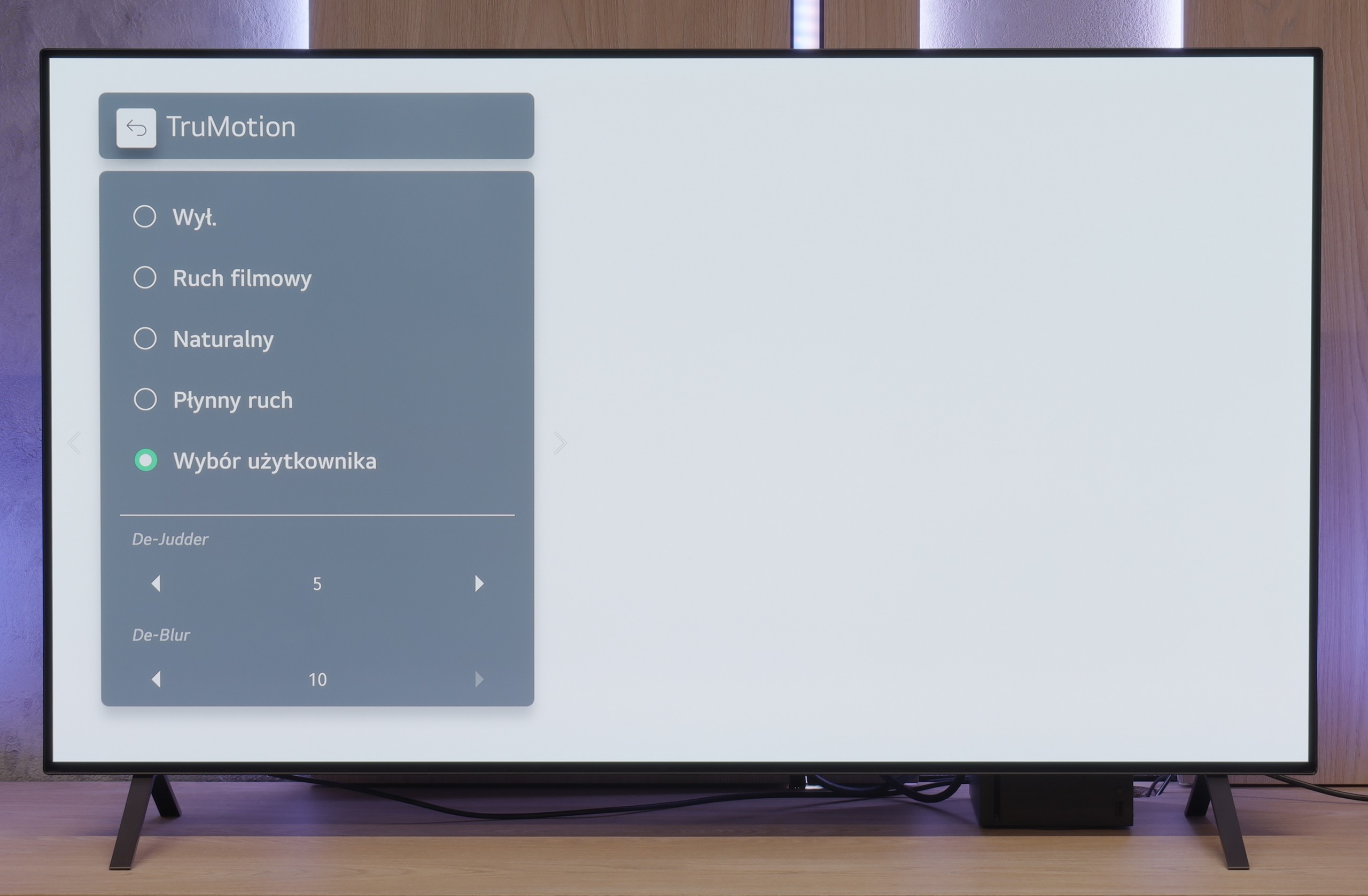
Blur (native resolution, maximum refresh rate):




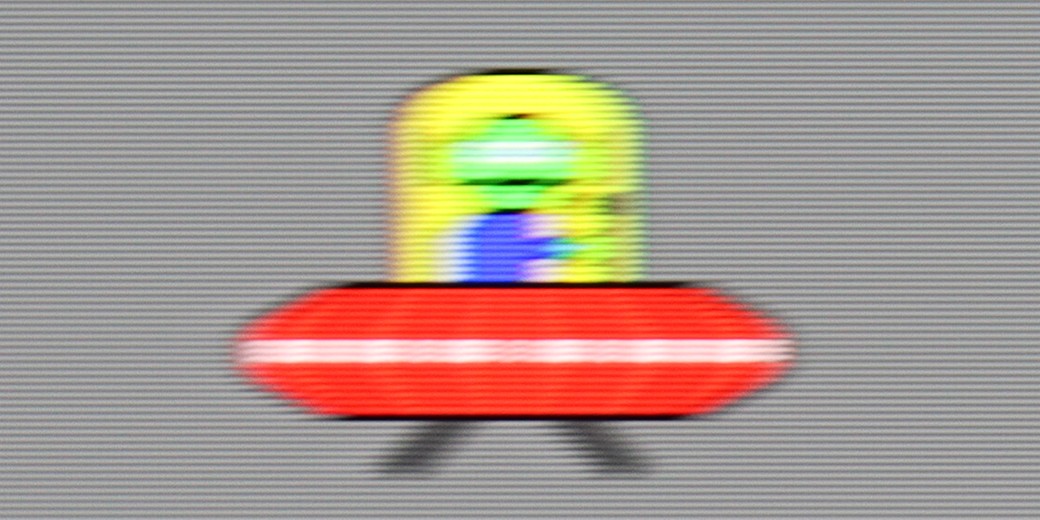

Blur (BFI function enabled):
Image flickers in this mode



The maximum refresh rate that we can set on the LG G4 is 144 Hz. Naturally, this is only possible when connecting the television to a very powerful PC. In other cases, we will be operating at a maximum refresh rate of 120 Hz, which is recommended if we primarily want to watch sport or content with a lot of motion dynamics. For those requiring high fluidity of the image, the manufacturer has implemented a multi-step motion smoother called "TrueMotion". It has been divided into two separate sliders that adjust the sharpness of moving images (De-Blur) and judder (De-Judder). Both sliders can be set within a range from 0 to 10, with each degree affecting the degree of smoothing, allowing everyone to find their golden mean.
The LG OLED C4 panel features an average response time of less than 1 ms (which directly results from our measurements), allowing for an incredibly clear image that is unattainable for LCD televisions, whose response times can be as high as several milliseconds. This is clearly visible in the pictures from the "UFO Test," showing no trailing blur behind the object.
LG B5 is a television with a 120 Hz OLED panel. It may not sound as impressive as the marketing claims of “144 Hz” or “165 Hz” found in gaming monitors, but honestly? The smoothness is excellent nonetheless. The picture is sharp, fluid and simply enjoyable to watch – even when there is a lot happening on screen. The organic panel does its job – the pixel response time is almost instantaneous, meaning there’s no sign of smearing or blurring that can spoil dynamic shots. Sport, fast-paced games – everything looks clear and distinct.
We also have the classic LG smoothness enhancer, TruMotion. This allows you to smooth out films shot at 24 frames per second – which, to put it bluntly, is most of what you watch on Netflix or from Blu-ray discs. If you set lower values on the “De-Judder” slider, you’ll get a picture closer to a cinematic look – with a slight judder, but without any artificiality. Higher settings? A soap opera effect is guaranteed. Fortunately, LG gives you the option to tune everything to your liking.
Console compatibility and gaming features
10/10
10/10
- ALLM
- VRR
- VRR range40 - 144Hz40 - 120Hz
- Dolby Vision Game Mode
- Correct implementation of HGIG
- 1080p@120Hz
- 1440p@120Hz
- 4K@120Hz
- Game bar

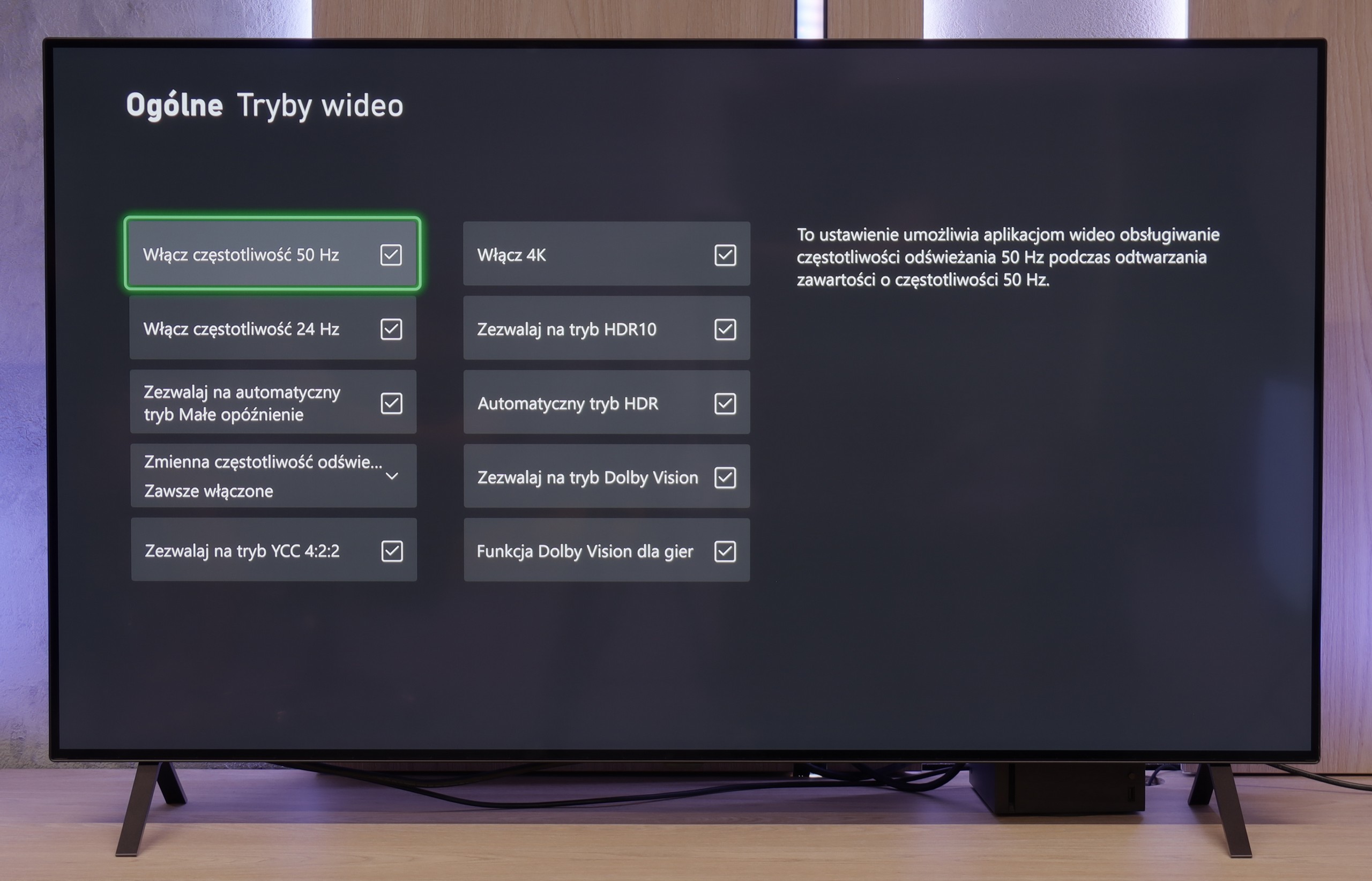

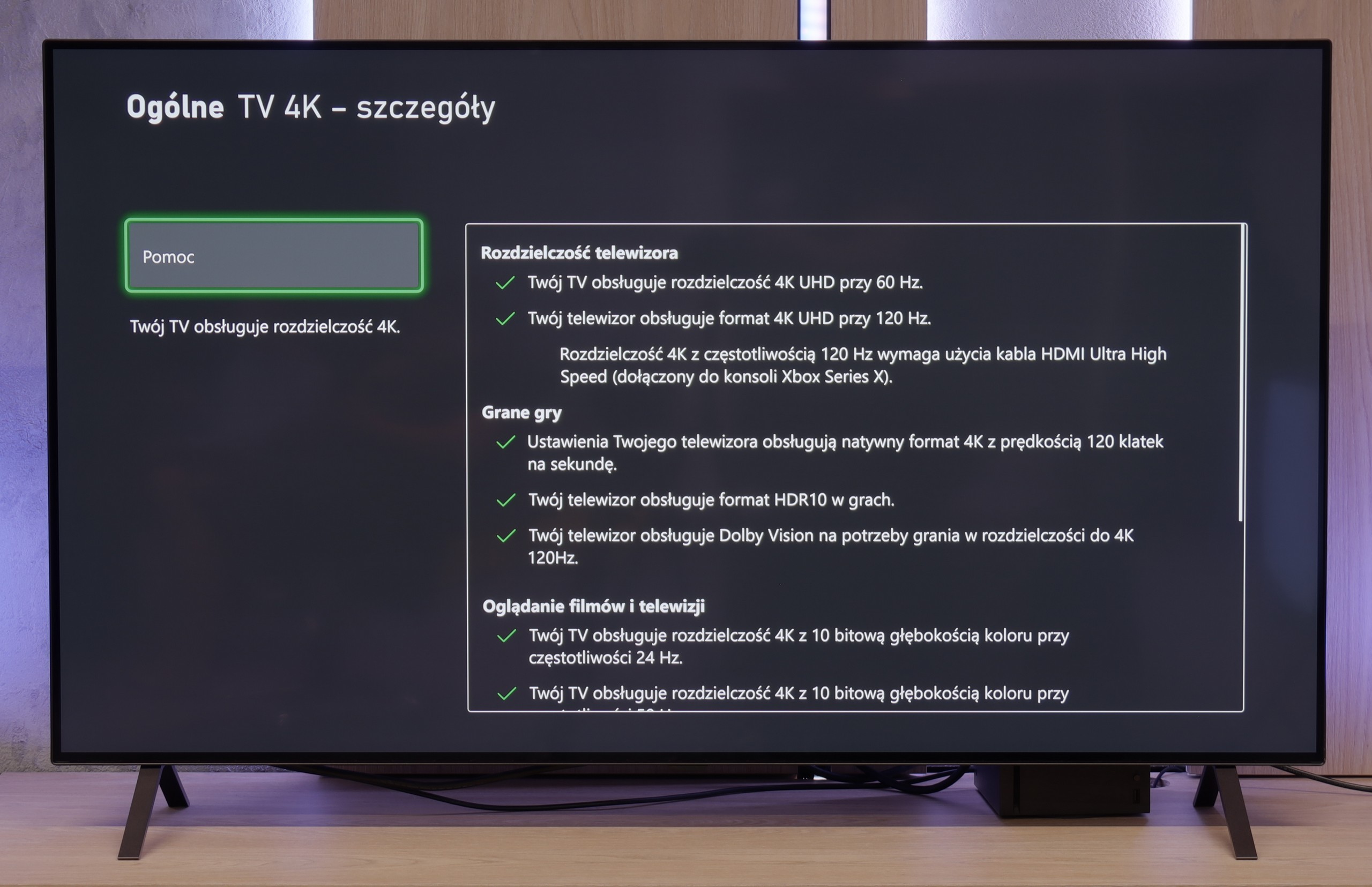

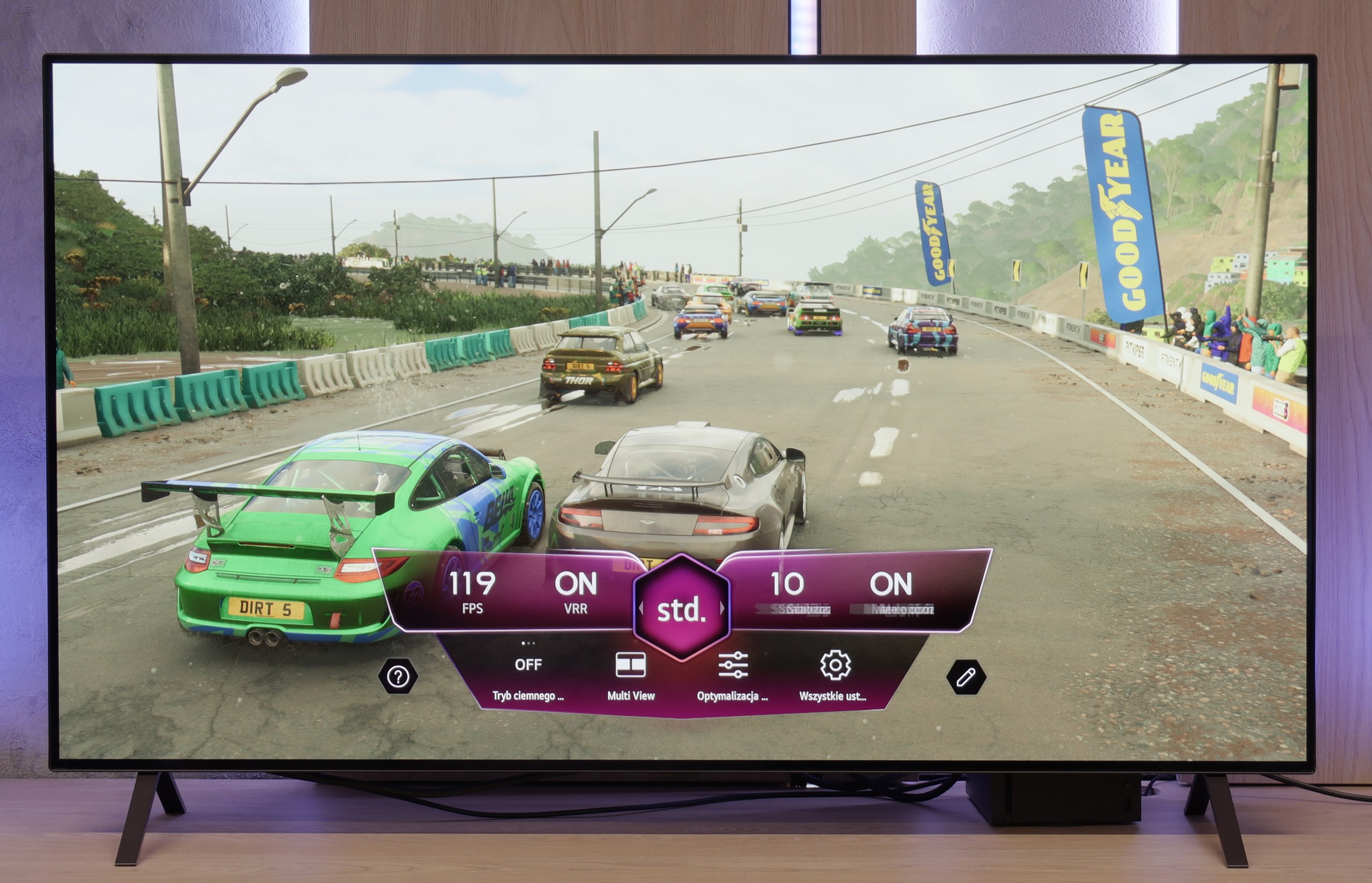

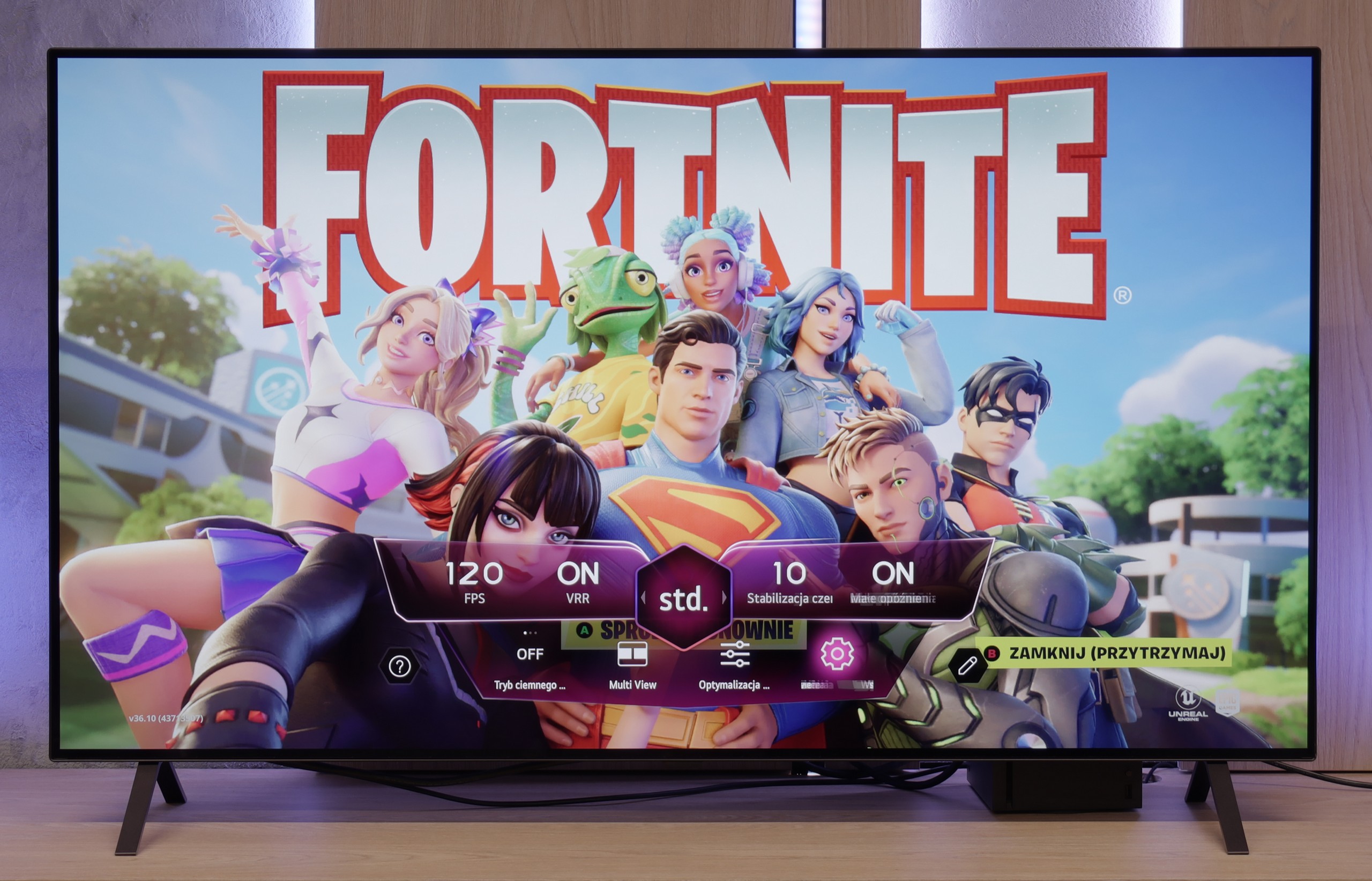
We can already say that LG C4, like practically every OLED television from the manufacturer, is exceptionally good in terms of compatibility with consoles and PCs. Thanks to the implementation of four full bandwidth HDMI 2.1 ports at 48 Gbps, the manufacturer has included all features that enhance the gaming experience, among which we find simultaneous support for FreeSync and G-Sync technology. With such a tandem, gamers with a graphics card from AMD or Nvidia can confidently opt for C4. However, what should delight the players requiring the highest possible quality the most is the simultaneous implementation of HDR Dolby Vision and HGIG mode. The first is particularly important as it works with extremely low input lag in all settings.
A standard in the Korean manufacturer's televisions is also the implementation of GameBar, allowing for quick adjustments of settings "on the fly" without the need to exit the game. It also enables image adjustments for visually impaired individuals, which is a very nice touch. Another important piece of information is that when VRR technology is enabled, we will not experience a drop in contrast. This is, of course, due to the panel's design and the absence of conventional backlighting. However, it is normal for shades of grey to flicker slightly, although this is a characteristic feature of this function regardless of the manufacturer and television.
In summary: LG C4, just like all of the manufacturer's OLEDs equipped with high refresh rate panels and HDMI 2.1 ports, creates a harmonious whole with consoles. In practice, it is a complete television, and if we expect the highest possible performance in gaming, C4 will be an ideal choice.
There are already a few televisions on the market with the label “for gamers” that, in practice, don’t understand what that means. The LG B5 is not one of them. Everything here is spot on – there are four HDMI 2.1 ports, it has 120 Hz, VRR, and ALLM, and it even has a Game Bar that is actually useful, not just looks good in the brochure. You connect your console – it works. You set 4K at 120 Hz – it works. You have an Xbox and want to play in Dolby Vision – it works too. And this is not in the sense of “theoretically supports”; it really turns on, looks good, and you don’t need to fiddle with the settings for half an hour. Additionally, there’s the HGiG picture mode that LG implemented correctly – which means HDR in games doesn’t turn the screen into a flash lamp, but shows exactly what it should. There are no surprises here, no strange limitations, no “buts.” And you know what? That’s how it should be. Cheers to the LG B5!
Input lag
10/10
9.9/10
SDR
HDR
Dolby Vision
The input lag of the LG C4 is at an incredibly low level in every scenario. Even the most dedicated gamers will surely appreciate the very low input lag at demanding 4K 120 Hz settings with HDR, which is just 5 ms. It is also worth noting that the lag at the same settings but with Dolby Vision HDR enabled remains unchanged, which is not so obvious with the competition. Therefore, it deserves the highest rating and recommendation.
Here we won't elaborate – the LG B5 simply has excellent input lag. For 60 Hz content, it achieves results below 10 ms, and for 120 Hz it even drops to around 5 ms. These are values that cannot be fairly critiqued. It simply works instantly, with no delays, no surprises. Well… almost. Because as usual, there is a small asterisk with the Dolby Vision Gaming mode. In this mode, the response time slightly increases. It’s nothing dramatic – they are still very low values, hardly noticeable during gameplay – but if you play exclusively competitive titles and fight for every millisecond on the XBOX, it’s worth keeping in mind.
Compatibility with PC
8.6/10
7.6/10

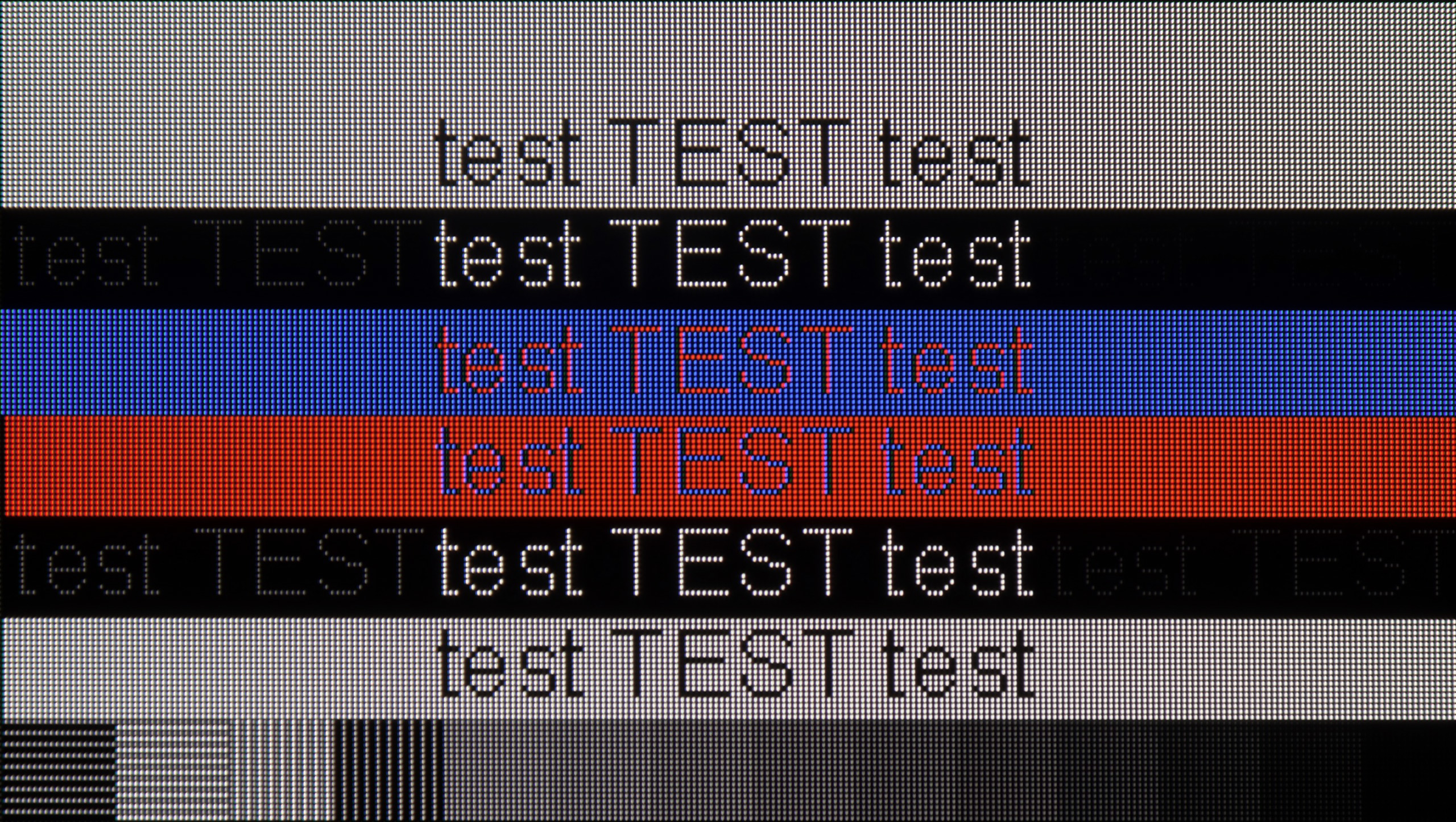
LG C4 in combination with a PC performs excellently, thanks to a very low latency of just 13.5 ms, which is practically an instantaneous response between the mouse, eye and screen. A particularly important issue when working on the screen is the readability of text, which in the case of the tested television is very good. However, it is worth noting that to achieve sharp fonts, you need to enable the passthrough option in the settings.
The RWBG pixel arrangement has no significant impact on the display of fonts or letters, which is a considerable advantage over Samsung's QD-OLED panels. Users of both computers equipped with the Windows operating system and macOS will certainly be satisfied with the experience on the screen of the tested television.
LG B5 is a television that communicates well with a computer. You won't find gaming frills like 144 or 165 Hz here, but is that really necessary for anyone? Thanks to the 120 Hz panel, low input lag, and G-Sync support, it's truly a very good screen for gaming on PC. No stuttering, no tearing, with lightning-fast response.
But it's not just for gaming. You can also quite comfortably... simply work on the B5. The television properly supports chroma 4:4:4, so fonts are readable, interfaces are clear, and your eyes won't hurt from blurred letters. This isn't a given, even among more expensive models. However, there is one 'but' – and this applies not only to the B5, but to any OLED with a WOLED panel. The RWGB subpixel arrangement can cause a slight shadow along the edges of fonts. This isn't something that stands out from the sofa. It's something that someone sitting with their nose to the screen and spending half the day in Excel would notice.
Viewing angles
7.5/10
7.4/10
The undeniable advantage of OLED panels is their efficiency in the context of group viewing, that is, from various angles. LG C4 maintains very good contrast, colour saturation, and fidelity. Although this is not the result of organic televisions supported by MLA technology, it cannot be said that anyone who purchased the device was dissatisfied with the results obtained. However, it should be noted that at sharp angles, a slight greenish tint can be observed. This is a characteristic feature of WRGB panels from LG, without the aforementioned microlens technology, and unfortunately, there is nothing that can be done about it.
In terms of viewing angles, the LG B5 performs very well – exactly as one would expect from an WOLED panel. No matter from which side you sit, the picture maintains its quality. The colours do not wash out, the contrast does not deteriorate, and the details remain clearly visible. However, it must be said that this is not the level of Samsung Display's QD-OLEDs. Those can hold colour saturation even better at extreme angles. But if you do not plan on watching films while sitting at a 90-degree angle – the B5 is more than sufficient. It is one of those televisions that is simply pleasant to look at – from every angle.
TV efficiency during daytime
5.7/10
4.9/10

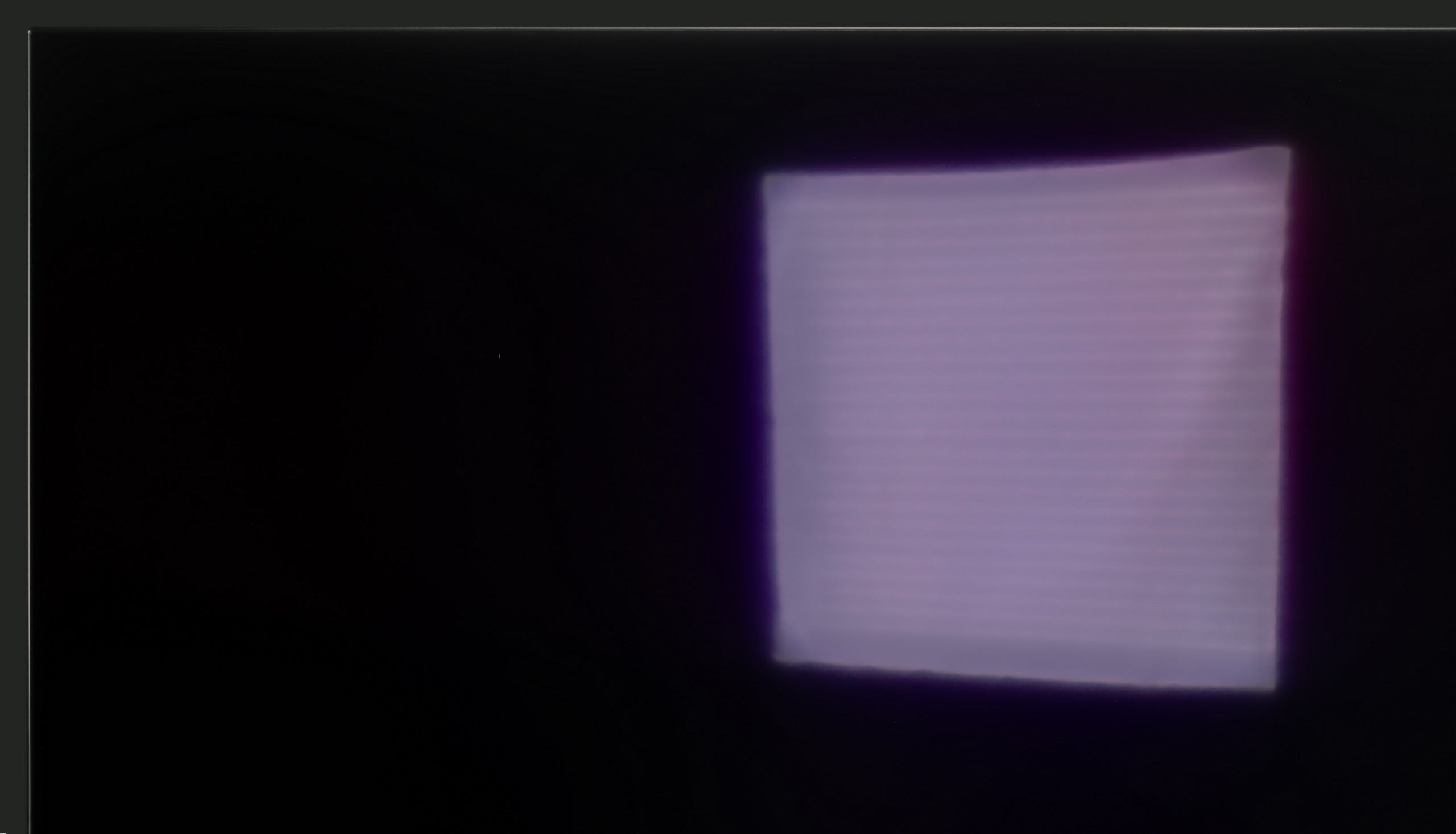


Matrix brightness
Average luminance SDR
LG OLED B5: 279 cd/m2
LG OLED C4: 367 cd/m2
The maximum brightness of the television in SDR materials is 367 nits. For an OLED television, this is a very good result that allows for quite comfortable viewing during the day. It is worth noting two things. Thanks to the glossy coating of the screen, reflections are held well in place and do not spill over onto the rest of the display. The second issue is the brightness of the screen at 100% white fill, which hovers around 220 nits, a remarkable result, as until recently OLED televisions in this range could only "boast" of brightness that was half as much. This means that conditions for watching, for example, winter sports will be very good.
LG B5 is a television that feels best after dark. But when the sun comes out, it becomes a challenge. The brightness of this model is rather average, and the anti-reflective layer... also average. There are no special coatings here that handle reflections or very bright daylight well. So if you plan to place this television opposite a large, uncovered window – it could simply be difficult to see anything.
Fortunately, there is something worth praising: the glossy WOLED panel maintains colour saturation well. Even in difficult conditions, the image does not fade and does not become "washed out," as can happen with some models of televisions. Generally, it is watchable, but if you are looking for a television specifically "for a bright living room," then the B5 should not be your first choice.
Details about the matrix
Subpixel Structure:

Panel uniformity:

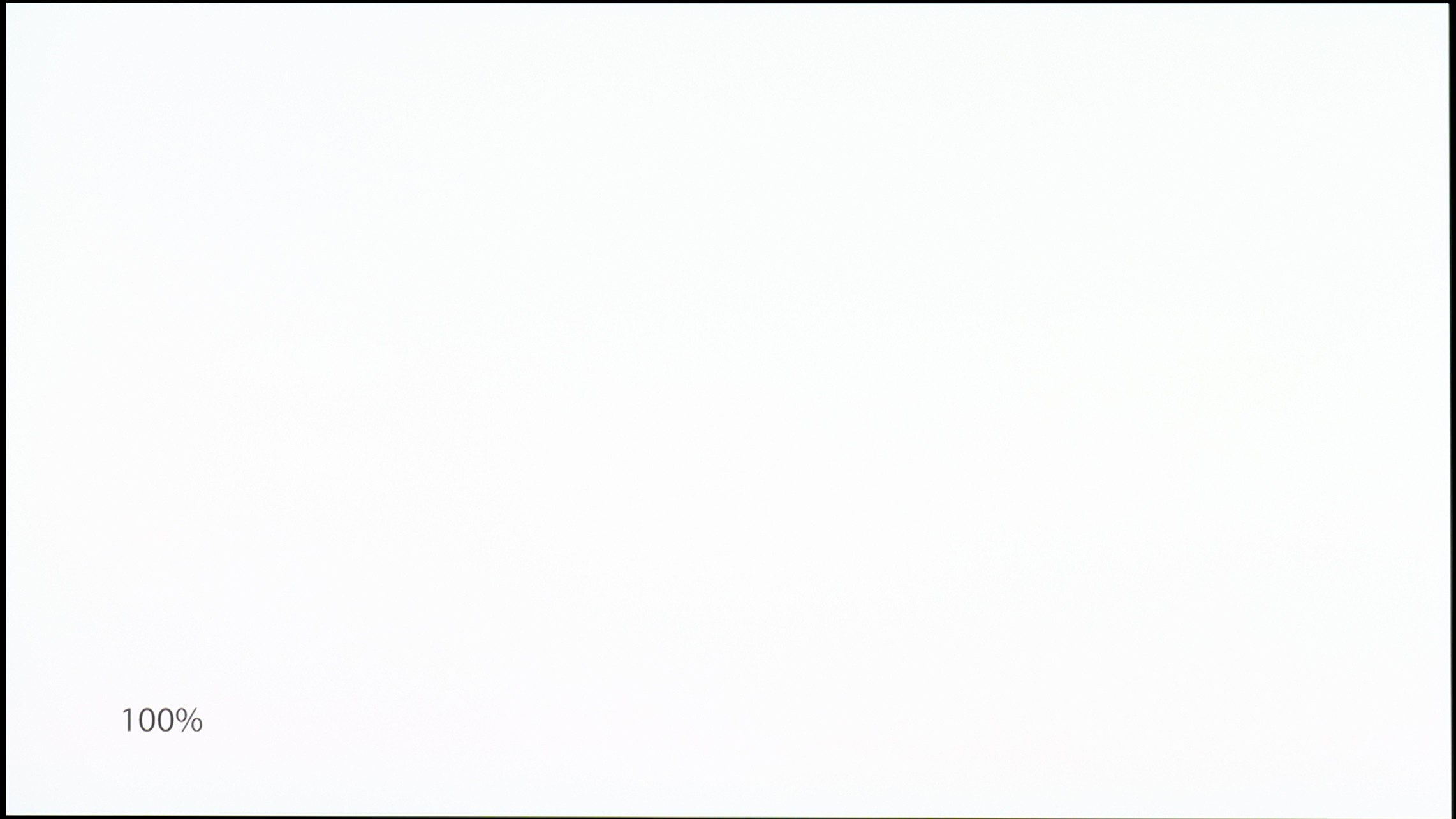
TV features
9/10
8.2/10
- HDMI inputs0 x HDMI 2.0, 4 x HDMI 2.1 48Gbps0 x HDMI 2.0, 4 x HDMI 2.1 48Gbps
- Other inputsIR (remote)
- OutputsToslink (Optical audio), eARC (HDMI), ARC (HDMI)Toslink (Optical audio), eARC (HDMI), ARC (HDMI)
- Network InterfacesWi-Fi 2.4GHz, Wi-Fi 5GHz, Ethernet (LAN) 100MbpsWi-Fi 2.4GHz, Wi-Fi 5GHz, Ethernet (LAN) 100Mbps
- TV receptionDVB-T, DVB-T2, DVB-S, DVB-S2, DVB-CDVB-T, DVB-T2, DVB-S, DVB-S2, DVB-C
Classic features:
- Recording to USB (terrestrial TV)
- Recording programming
- Picture in Picture (PiP)
- RF remote control (no need to aim at the screen)
- Backlit remote control
- Teletext
- Audio only mode
- Possibility to connect Bluetooth headphones to the TV
- Possibility to simultaneously use Bluetooth headphones and the TV speaker
Smart features:
- AirPlay
- Screen mirroring (Windows Miracast)
- Wyszukiwanie głosowe
- Voice search in native language
- Ability to connect a keyboard and mouse


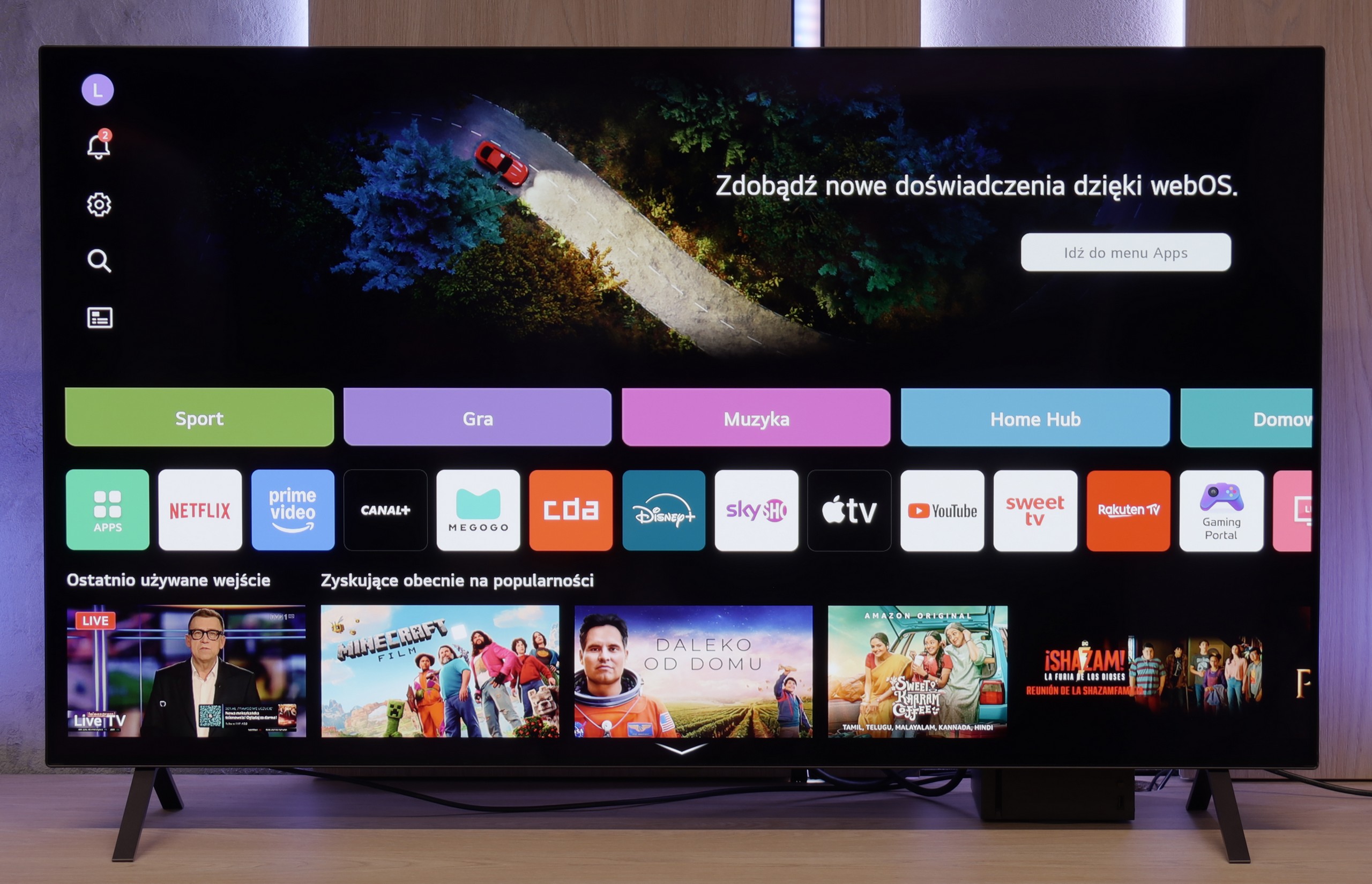
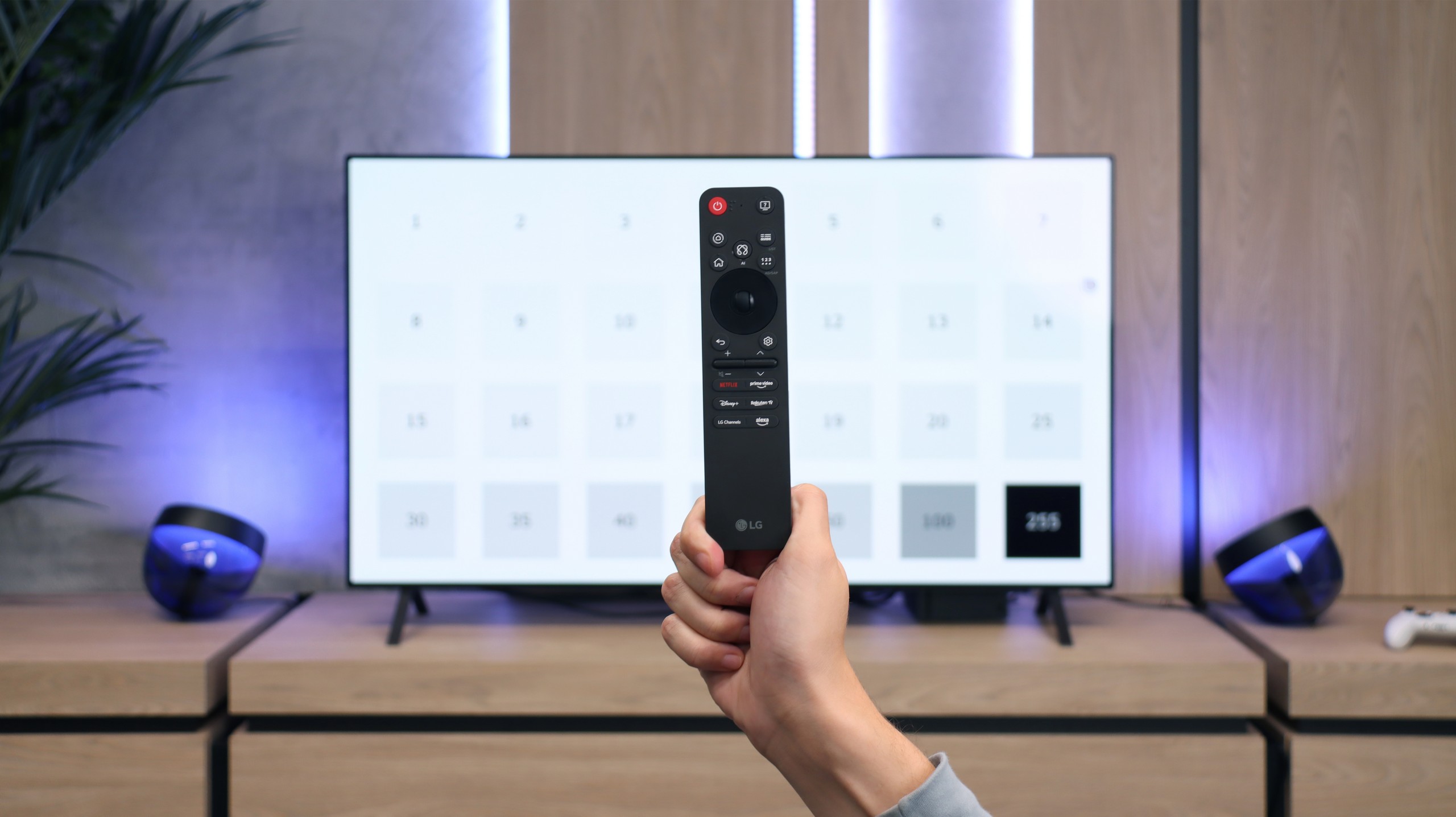
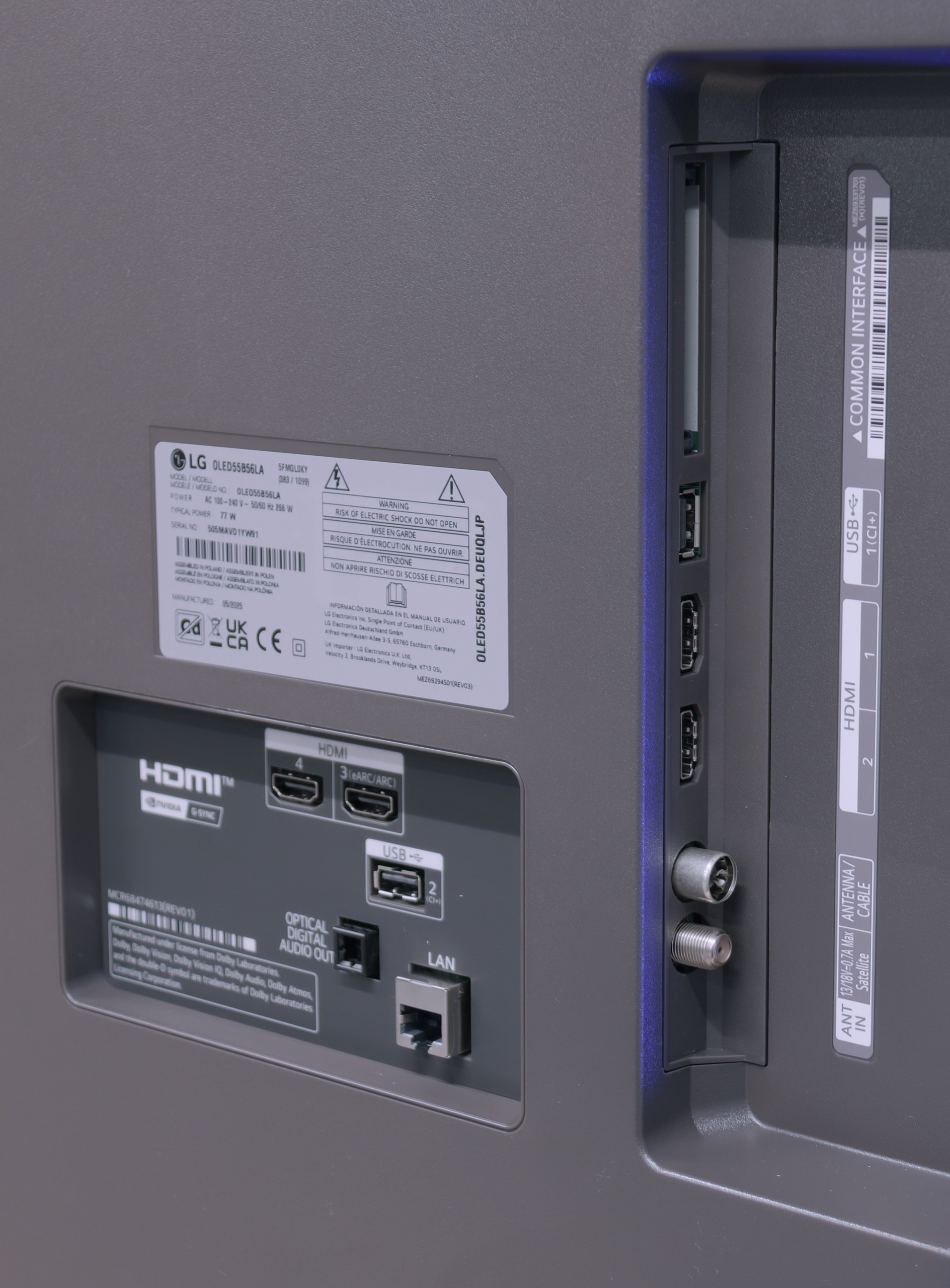
LG uses the well-known proprietary WebOS system that has been around for many years. The system offers practically all the most important applications, and the few that are missing can be counted on one hand, such as CDA or KODI. It is also worth mentioning that the modern web browser and the remote control with a built-in mouse allow for convenient use of streaming services in this way, if there is no built-in application.
WebOS also features a highly valued ability to perform operations with a cursor that appears when the remote control is in motion. The convenience of such a function is invaluable when typing in queries or passwords for portals. WebOS, like most systems, also supports features such as screen mirroring, AirPlay, voice search in Polish, and the ability to connect headphones via Bluetooth. On more practical matters, WebOS allows simultaneous use of headphones and the TV speaker, which will certainly be a big help for people with hearing impairments. Among the more interesting features, particularly appreciated by sports fans, is the option to turn on an alert notifying about an upcoming match, ensuring that we never miss a broadcast. The home panel is also praiseworthy, allowing for the control of all smart devices connected to the home network. For example, the cycle of completed laundry will be signalled by a notification in the upper right corner.
In summary, the WebOS system, although less known and having certain limitations compared to Android TV, offers stable and fast performance and supports most features that users may need. It is a solid solution for those looking for a simple and effective operating system in their television.
User features
Although the LG B5 is modern equipment, it hasn't forgotten about those who sometimes just want to... watch television. Without apps, without accounts, without logging in anywhere. It comes with built-in DVB-T2 tuners and the ability to record onto USB, along with a clear and fast EPG guide. Is that not enough? There’s even a working teletext – for many, probably a relic, for others, a daily necessity. We also appreciate the option to turn off the picture and leave just the sound, which is great for listening to music. And if you want to watch quietly – you can easily pair Bluetooth headphones, without a struggle with settings and without delays. Everything works as it should.
SMART TV: webOS
The biggest distinguishing feature of the webOS system – still! – is the way it is controlled. The Magic remote that comes with the LG B5 (in our version B56 – without a numeric keypad) works like a magic wand. You point, click, select. And it simply… works. Intuitively, quickly, and without unnecessary side-to-side clicking. Additionally, there’s an AI voice assistant – quite efficient. You can summon it directly from the remote and use your voice to search for content, change settings, or switch sources. WebOS may not be the most "modern" system on the market, and the built-in ads can be annoying, but when it comes to user convenience – especially with the Magic remote – it still outpaces the competition by a step.
Playing files from USB
9.3/10
8.6/10
Supported photo formats:
Maximum photo resolution:

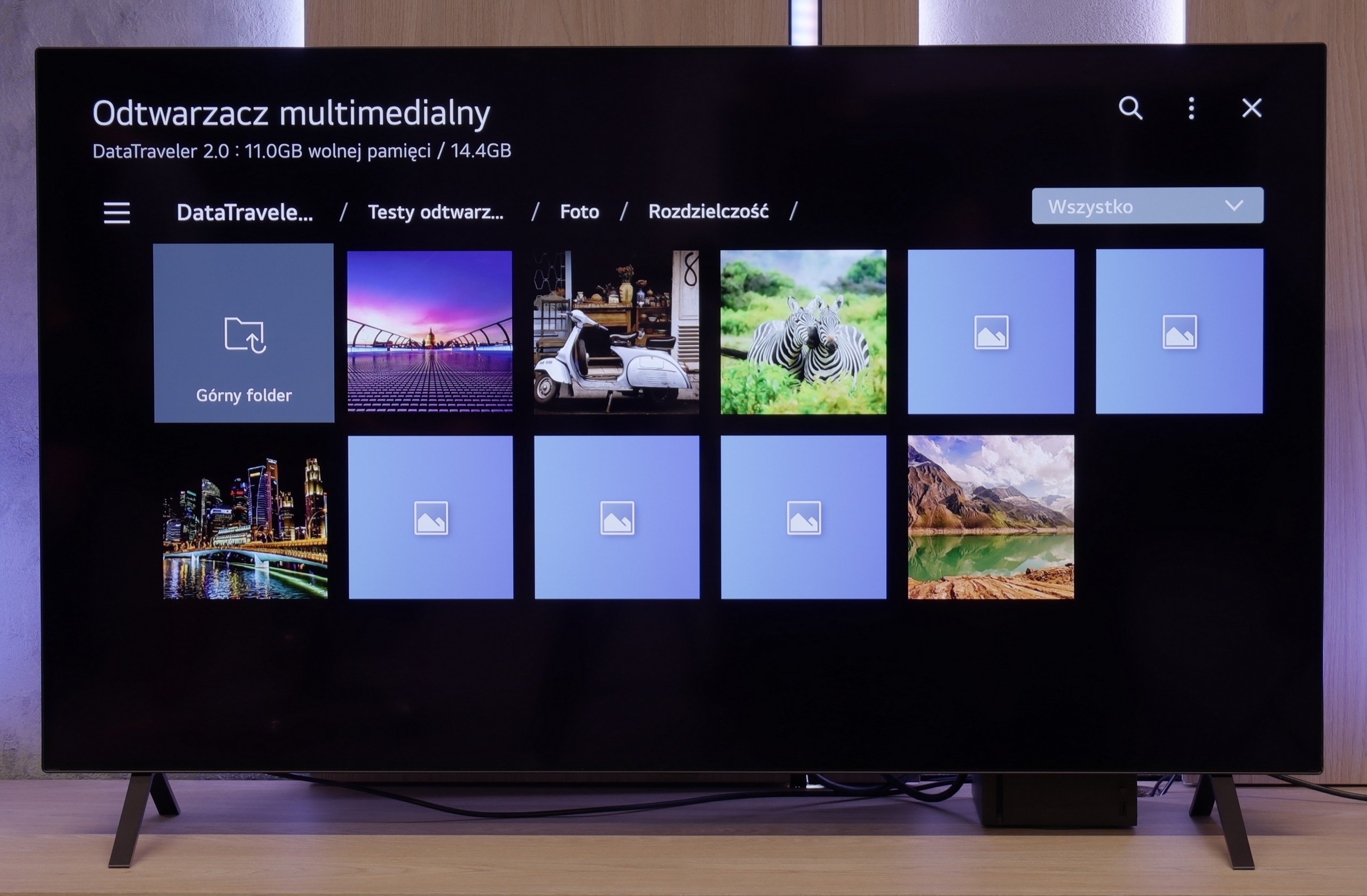
The default file player in LG C4 definitely handles all image resolutions well. We can successfully play videos recorded in virtually all the most popular formats, including Dolby Vision. The only codec that the C4 does not support is H.266 VVC, although this is currently rather unused. However, it is a pity that subtitles in .txt format are not supported. Attention should be paid to the supported image formats, of which there are only three: JPEG, PNG, and, importantly for Apple phone users - HEIC. However, the tested television cannot be faulted for lack of diversity in audio files, the playback of which will not be met with a compatibility warning.
LG B5 handles files from USB as it should. Most popular formats work flawlessly, and subtitles – even with Polish characters – are displayed correctly. You can easily play a movie from a USB stick or have a weekend slideshow of your holiday photos without worrying that something will go wrong. However, there was a surprise with HEIC format files – that is, photos saved by Apple devices. While the LG C5 had no issues with them, the B5 stubbornly refused to cooperate and was unable to display them. A minor hiccup that probably won't affect everyone, but it's worth knowing about.
Apps
8.7/10
8.7/10














































Sound
7.5/10
7/10
- Subjective sound quality:7.5/107/10
- Dolby Digital Plus 7.1:
- Dolby True HD 7.1:
- Dolby Atmos in Dolby Digital Plus (JOC):
- Dolby Atmos in Dolby True HD:
- DTS:X in DTS-HD MA:
- DTS-HD Master Audio:
The implemented audio system in LG C4 has been very well tuned, allowing us to experience strong bass, as well as balanced mid and high tones. We can confidently say that in its price range, it is one of the better sounding televisions. However, we believe that those deciding to purchase the C4 will already own a dedicated audio set. The presence of DTS-HD Master Audio and Dolby Atmos codecs will not be without significance.
We weren't expecting miracles – after all, the LG B5 doesn’t have an advanced audio system, and its built-in speakers look... well, like those in most flat-screen televisions. And yet – it sounded really pleasant. The dialogues are clear, the sound doesn’t boom, and during a calmer viewing, we didn’t immediately feel the need to connect a soundbar. It's a pity that this year LG decided to cut something that worked in the previous generation. We're of course talking about support for DTS formats, which we will no longer find in the B5. If you have films encoded in this format – you'll need to rely on an external player.


